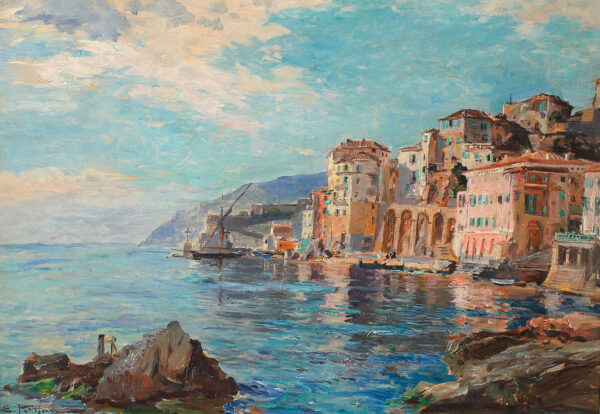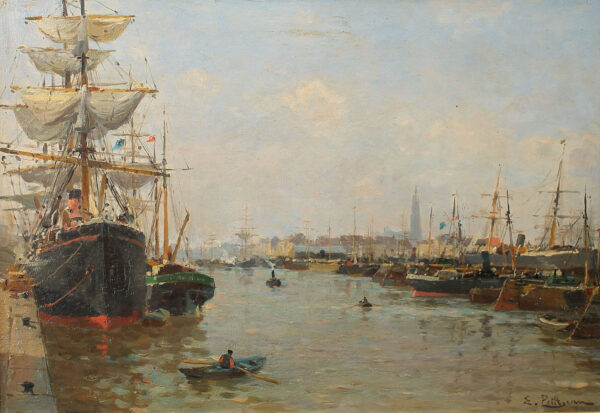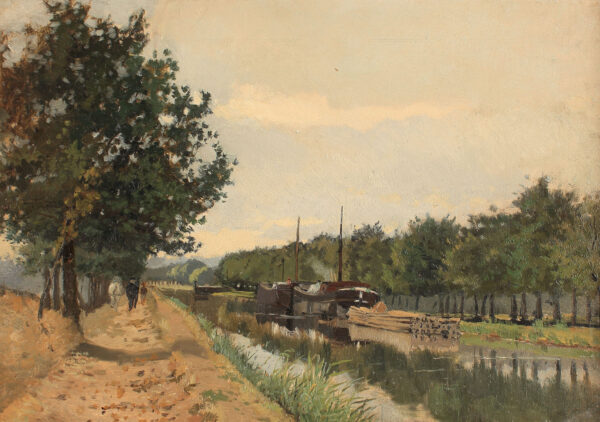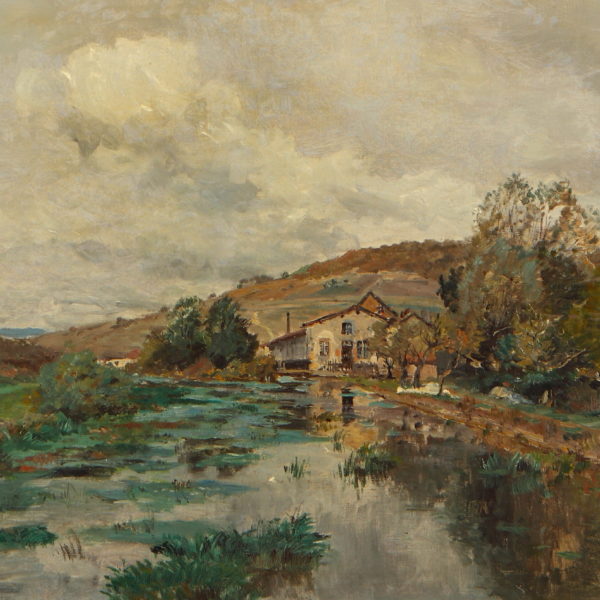Edmond Pettijean was born in 1844 at Neufchâteau in the Vosges.His father, a lawyer, did not allow him to study art until he had completed courses at the Faculty of Law at Nancy.From that moment, he abandoned the law and was able to devote himself entirely to his artistic career.Success followed swiftly; his work was well received at the exhibition of the Lorraine Society of the Friends of Arts, and then, in 1873, he made a brilliant début at the salon in Paris.
He was awarded an honorable mention in 1881, and a bronze medal in 1884; hors-concours, and a silver medal in 1885; a silver medal in 1889 at the Exposition Universelle, the Legion of Honor in 1892, and a gold medal at the Exposition Universelle of 1900; he was a member of the jury and of the Committee of the Artistes Français for many years.
Yet he was never satisfied with his own work:
“In my painting, I have searched passionately for perfections, delicacy, tenderness of expression and tone; and I feel that it will all crumble and become insipid in the Salon where, in order to elbow one’s way in, one most by violent.”
All those aspects of nature which Petitjean loved appear in his work. He could see the picturesque detail and transcribe it in full; sensitive to color, but wary of its violence, his mastery of his craft was sure and of infinite variety. He loved the countryside, and his vision was essentially that of a country man, his inclinations leading him to the peace of rural surroundings.
Petitjean is perhaps best known for his depiction of the countryside and villages of Lorraine and Vendée. He did, however, find inspiration further afield – in the harbors of le Hâvre, Dunkerque, les Sables d’Olonne, Dieppe, Rotterdam, Bordeaux and the neighboring coastline.
Petitjean died in 1925. His work is to be found in many important French museums and in numerous private collections in America, England and France.
MUSEUMS:
Amiens; Arras; Brest; Calais; Cherbourg; Digne; Dijon; Dunckerque; Epinal; Gray; La Rochelle; Laval; Leipzig: Lille; Mullhouse; Nancy; Paris (Palais des Beaux-Arts, Palis de Luxembourg); Perigueux; Reims; Toulouse.




